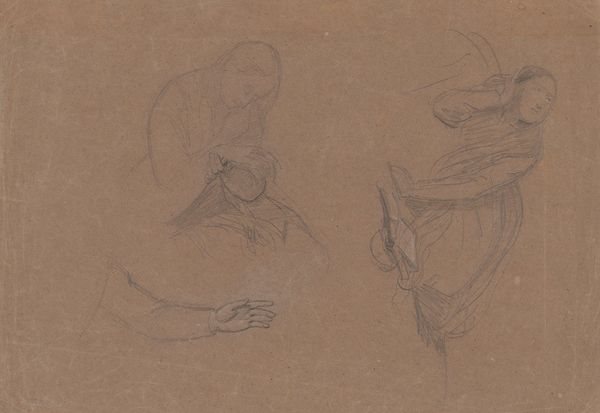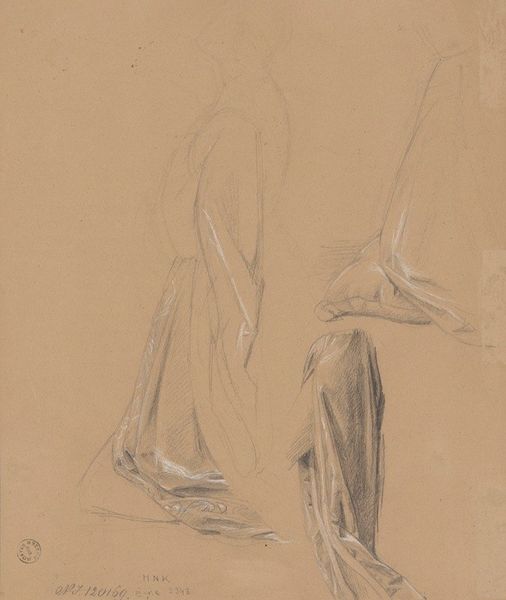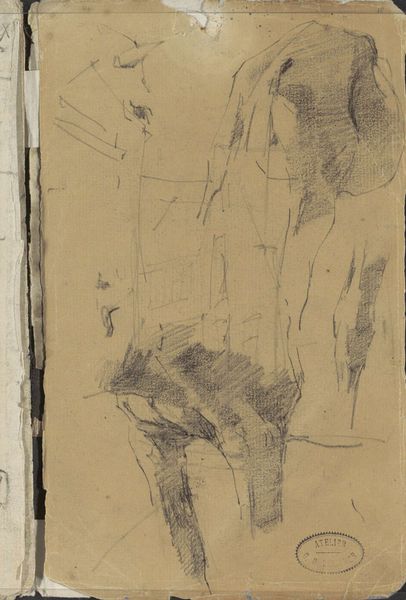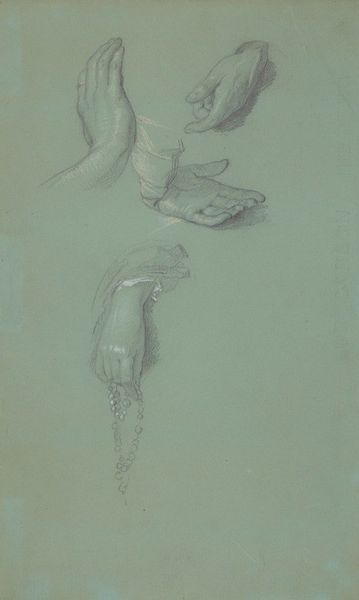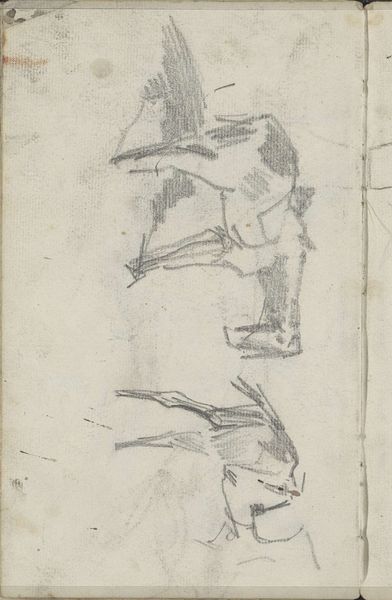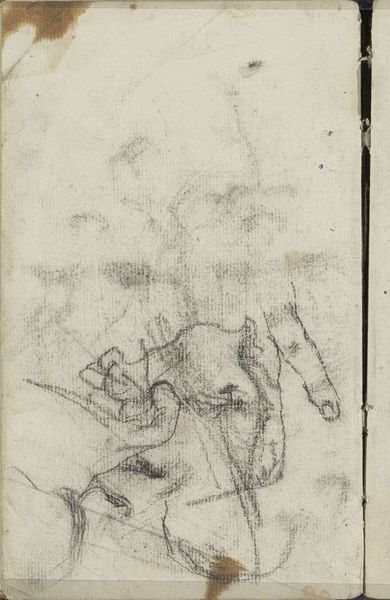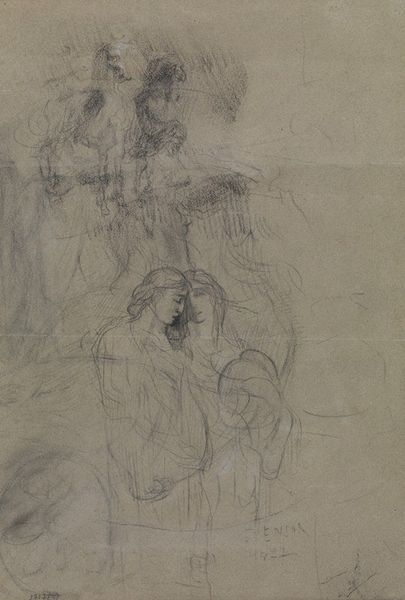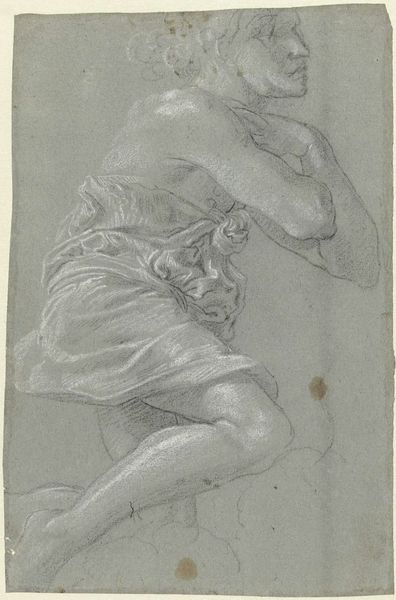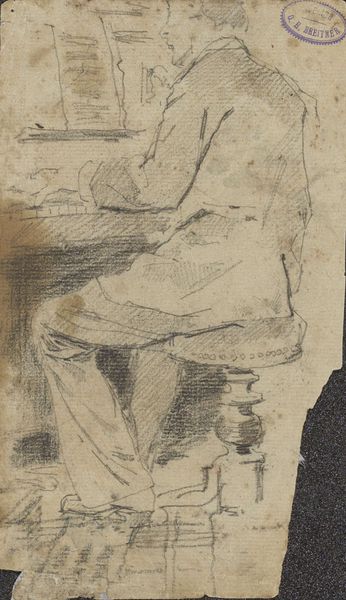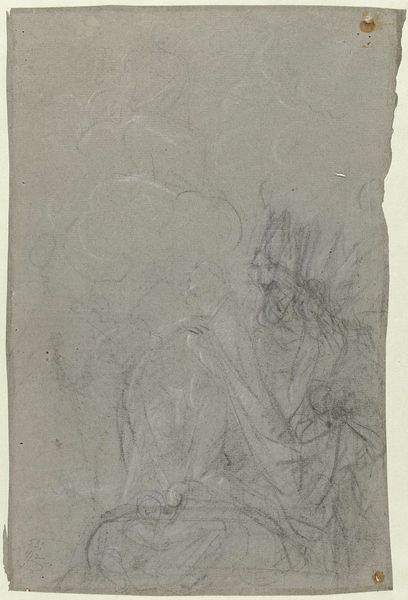
drawing, pencil
#
portrait
#
drawing
#
figuration
#
pencil
#
academic-art
Copyright: Public Domain: Artvee
James Tissot created this study of two girls in North European 16th Century dress with graphite on paper. The costume is full of significant detail. Note, in particular, the ruff around the neck of the figure to the left; it emerged in 16th-century Europe as a symbol of status, a stiff barrier between the individual and the outside world. Such motifs echo through art history, these high collars recur in portraits across time, each iteration carrying echoes of the past, yet shaped by its own moment. Consider how the ruff's form, initially a symbol of aristocratic dignity, was then satirized, later it was simplified, and even abstracted into mere decorative elements. This evolution reflects a broader psychological dance between the desire for self-expression and the constraints imposed by societal norms. Observe how Tissot, in his study, subtly evokes these tensions, reminding us of the cyclical nature of fashion and the enduring human need to communicate identity through dress.
Comments
No comments
Be the first to comment and join the conversation on the ultimate creative platform.
